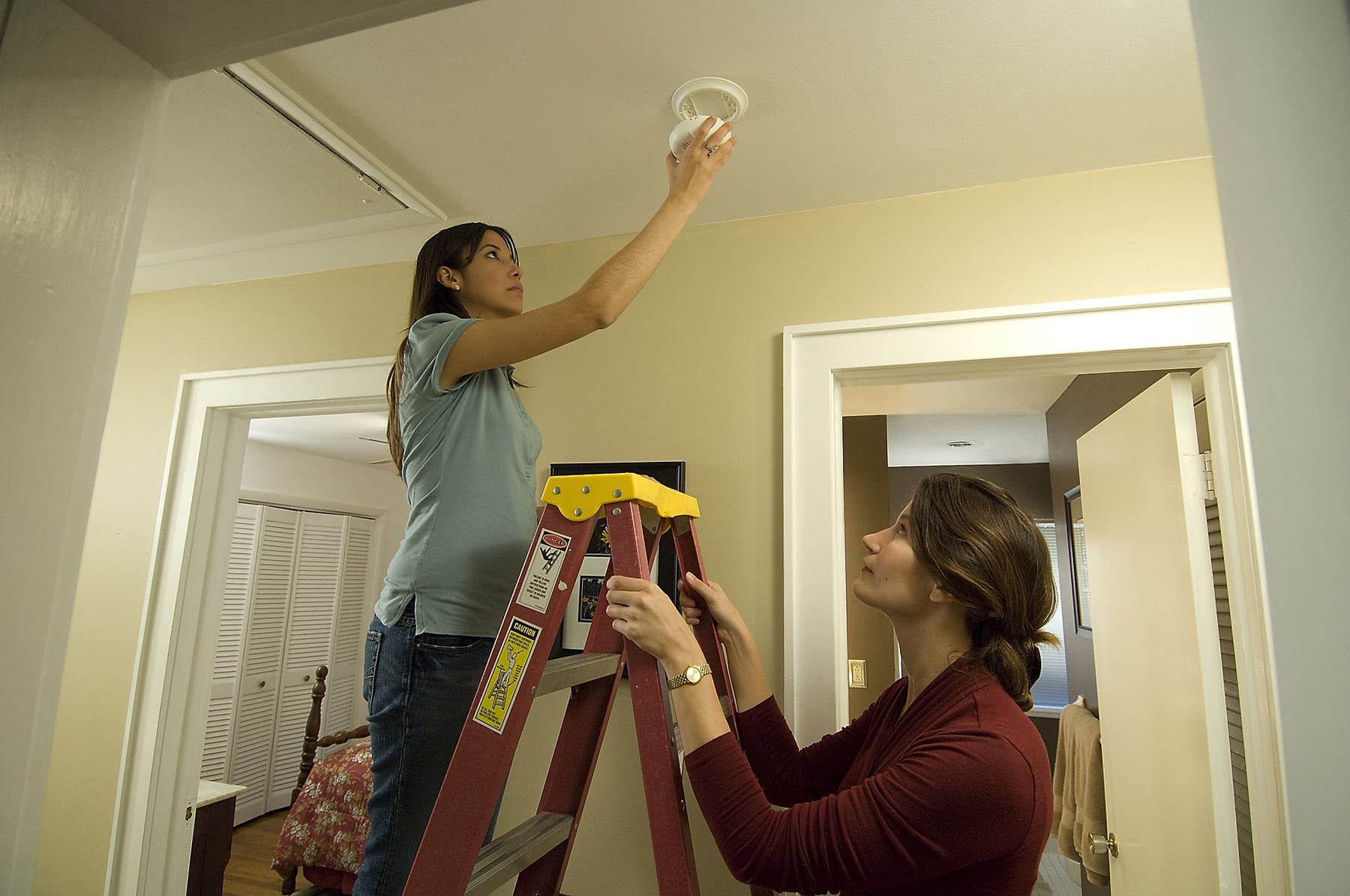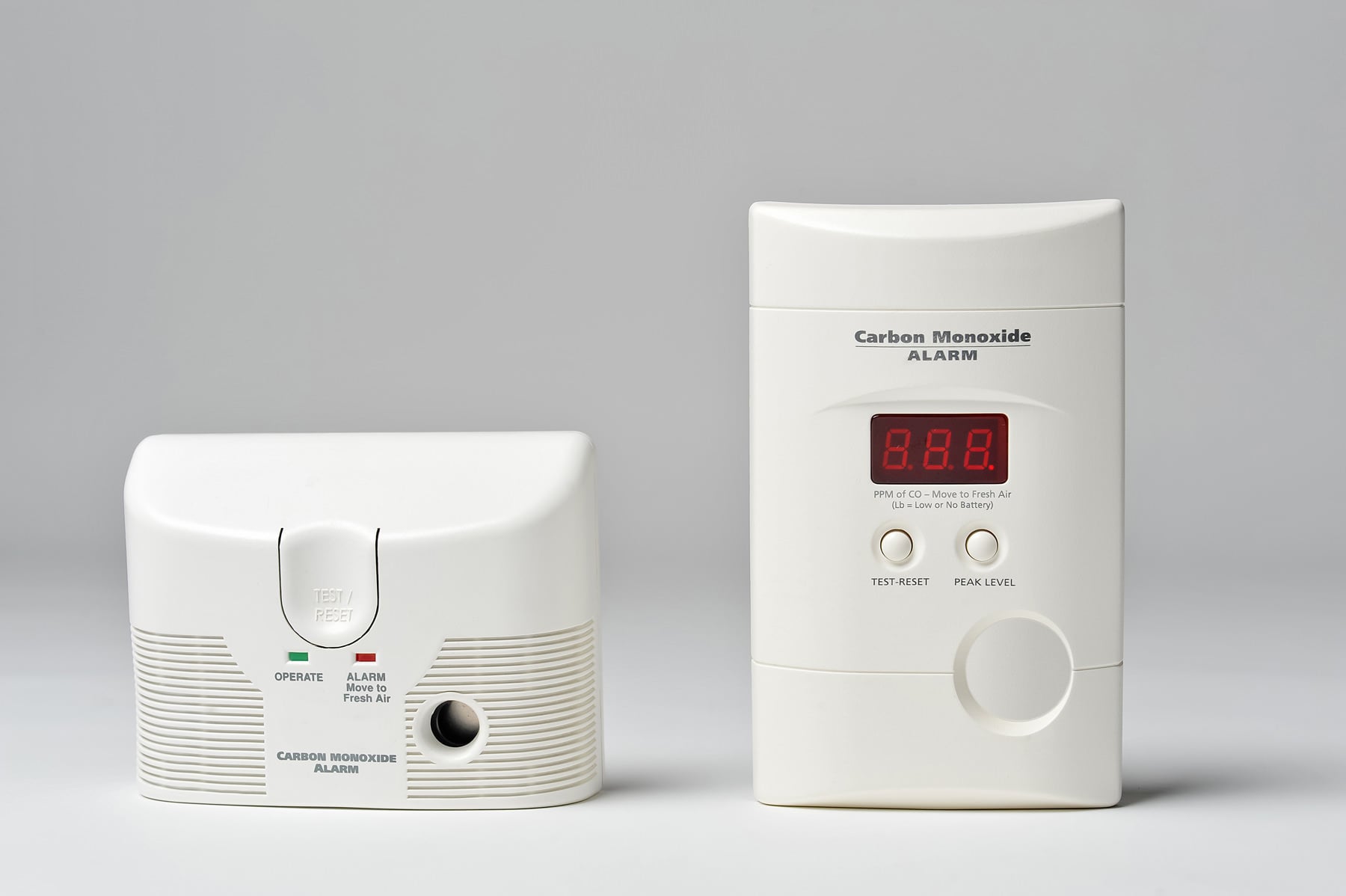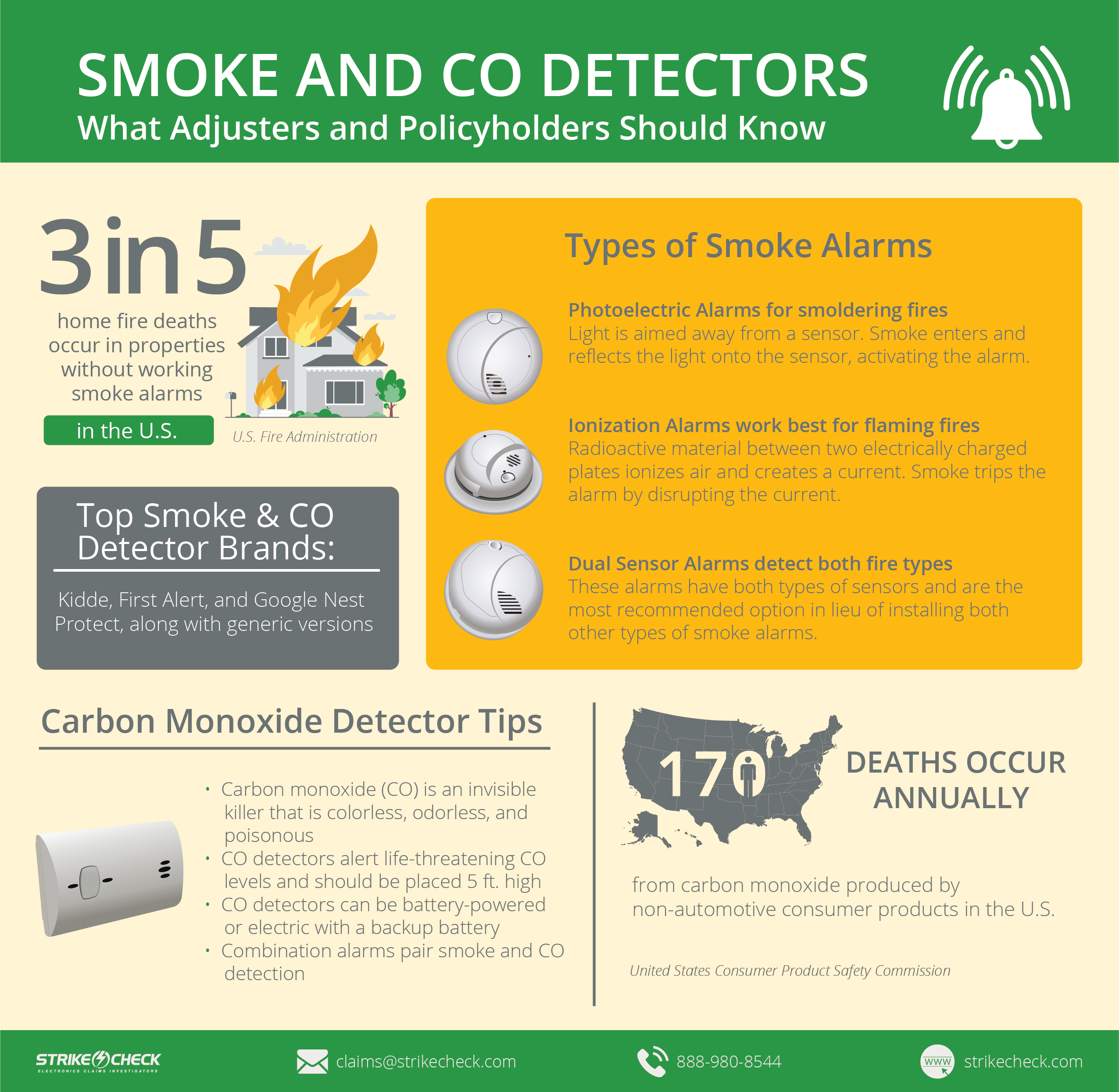Top Facts to Know About Smoke and Carbon Monoxide Detectors for Insurance Claims
Various insurance carriers require or incentivize policyholders to have smoke and carbon monoxide detectors in their homes or businesses as these devices could mean a matter of life or death. In some cases, damaged detectors could invalidate a policy or reduce a settlement if a fire were to occur. It’s important adjusters handle claims with smoke and carbon monoxide (CO) detectors as accurately as possible and reiterate to policyholders how vital it is that they work properly.
Ensure Your Policyholders Put Safety First
That annoying chirp that only ever starts in the middle of the night to indicate a low battery or a detector’s sensitivity to food that’s been on the stove too long could drive someone to disconnect this equipment and forget to reengage it. However, safety is the number one priority for why every home or business should have smoke and CO detectors.
Carbon Monoxide – The Invisible Killer

CO is considered the invisible killer because it’s colorless, odorless, and poisonous. According to the Occupational Safety and Health Administration report on CO poisoning, it can displace oxygen in the blood and keep it from going to vital organs, leading to death in a matter of minutes.
When people think of CO poisoning, they may envision vehicles idling in a closed garage. Other internal combustion engines, including portable generators, lawn mowers, and power washers, can also produce CO as can burning coal, wood, charcoal, kerosene, propane, and natural gas.
Carbon monoxide is also dangerous when it unknowingly comes from malfunctioning fuel-burning appliances, including furnaces, gas ranges, water heaters, room heaters, generators, and fireplaces.
According to the U.S. Consumer Product Safety Commission, 170 people in the United States die annually from CO produced by non-automotive consumer products. The Centers for Disease Control and Prevention states at least 430 people die in the United States annually from accidental CO poisoning, and an average 50,000 people visit the emergency department annually because of accidental CO poisoning.
Smoke and Fire Hazards
Your policyholders are more likely to know when smoke is filling a room than carbon monoxide, but inhalation can also be fatal.
Fine particles can penetrate lungs, which can cause health problems. Smoke could also lead to burning eyes, running noses, and chronic heart and lung diseases, according to the U.S. Environmental Protection Agency. People most at risk for smoke fatality are those with heart or lung disease, older adults, children, people with diabetes, and pregnant women.
The overarching importance of a smoke detector in a home is to identify a fire, which can cause more harmful and immediate damages.
CO and smoke detectors are among the first defenses against these perils that can harm people and property.
CO and Smoke Detector Options
Adjusters may see different types of detectors in claims.

Smoke Detector Types
Smoke detectors come in three most recognized categories: ionization, photoelectric, and dual sensor devices.
Ionization alarms work the best to detect smoke from flaming fires. These detectors work with a radioactive material between two electrically charged plates that ionizes the air and creates a current. Smoke that enters this space disrupts the ion flow and the current. The decrease in current sets off the alarm.
Photoelectric alarms are the best detectors for smoke from smoldering fires. Light is aimed away from a sensor inside the detector. When smoke enters the device, it reflects the light onto the sensor, which then activates the alarm.
Dual sensor alarms are the most recommended detectors because they have sensors for smoke from both smoldering and flaming fires. Policyholders who don’t have a dual alarm should install both ionization and photoelectric alarms in a structure.
Smoke detectors can be battery-powered or hooked up to the home or business’s power supply. Those powered into a building’s electrical system still have a battery backup in case of power loss.
They should be located throughout a structure to provide the most escape time from anywhere in the building. This includes wherever a person sleeps, outside each sleeping area, and on every level. Buildings that were constructed prior to codes about detector location still should comply.
Policyholders are also encouraged to have interconnected smoke detectors. As their name suggests, all the alarms sound when one is triggered.
Smoke detectors should be replaced every 10 years, or when they have reached the expiration date listed on the equipment. They should be tested monthly by pushing the test button and checking for the power light.
Carbon Monoxide Detector Requirements
CO detectors are designed to alert people before the structure reaches a life-threatening level of carbon monoxide. Many states and local jurisdictions require them in most buildings.
CO detectors can be standalone devices or part of a full home security system. Like smoke detectors, they can be interconnected and should be inserted on each floor, including the basement and garage, as well as inside or directly outside of each sleeping area. Policyholders shouldn’t put them in a space where they could be covered by furniture or curtains or near a flame-producing appliance.
Unlike smoke detectors, CO detectors should be installed about 5 feet off the floor because it is slightly lighter than air and can mix easily.
To keep them in proper working order, policyholders should follow manufacturer instructions and test and replace CO detectors accordingly. Detectors should be kept free of dust, dirt, and other particles, and the battery should be changed regularly.
Perils Impacting Smoke and CO Detectors

Smoke and CO detectors are used to alert policyholders of peril, but they sustain damage, too. Lightning and high voltage surge are the most frequently claimed causes of loss related to this equipment. Of those StrikeCheck assessed last year, 83% of them were determined to have sustained damage from high voltage surge, and 14% were non-damaged at the time of testing.
Adjusters and assessors should consider smoke and CO detectors when evaluating electrical damage at a home or office. It’s essential that these components are adequately installed, maintained, and tested. They should be replaced with devices that meet all safety requirements and are priced at market value.
StrikeCheck is the nation’s leading electronics and specialty item assessment provider, and our professionals can inspect not only smoke and fire detectors but also the appliances and other machinery that could put your policyholders at risk for exposure to smoke and carbon monoxide. Assessments find cause of loss, scope of damage, and provide repair or replacement options. Ensure your customers are obtaining safe equipment that meets requirements and follows manufacture specifications and pricing.
Read more about StrikeCheck’s onsite and desktop claim review services.

